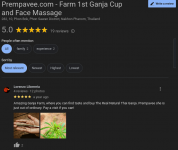Thai Sticks: S̄̀ng xxk kạỵchā 1960 -1980s
- Thread starter Thread starter acespicoli
- Start date Start date
-
- Tags Tags
- chiang mai kaycha mango thai red thai south east asia stick thai thai stick
@hempy
The Haze Whisperer
The plant was starting to fade, and was ready for harvest, cant remember exactly, but think it was week 20 or over under 12/12 that was grown hydroponically. It was a 14ft plant, grew it 7ft up, then trained it 7ft more sideways.Is this a picture on the day of harvest?
The best weed I ever grew or smoked was harvested after every single pistil had died. To be fair, other strains seemed to be better when they looked like your picture, a tiny scattering of white pistils left. Another plant I had indoors would never stop throwing pistils even after nine months! That was from the seeds I'm growing outdoors now. It's killing me. I'm attempting to manipulate nitrogen starvation and drought to get them to look finished completely.
They grow different indoors to out, you just need to do things a little different.
Here are a few old pictures of Thai sativas being grown outdoors in Thailand in the 70s.
Frank_Cambodian Landrace_Oakland_CA_1979
Frank_Capitate Stalked Resin Gland_Thai Stick_Photomicrograph X100, 1979
Frank_Capitate Stalked Resin Glands_Thai Stick_Photomicrograph X100_1979
THAILAND’S STEWARDS OF NATURE
PREMPAVEE GANJA IN THAILAND EMPLOYS REGENERATIVE FARMING TECHNIQUES AND RANKS THE COUNTRY’S BEST ORGANIC POT.
AUGUST 12024 BENJAMIN M. ADAMShttps://archive.hightimes.com/article/2024/08/01/thailands-stewards-of-nature
10 page article - sub req

I know some of us have tried her strains


My main cultivar is called Mekhong Classic
INTERESTING FACT: Arjan from greenhouse contacted her for the strain hunters episode in Thailand
Attachments
Last edited:
Red Thai
brickweeder
Well-known member
what a great shot, almost psychedelic...

Purple Thai - aka - Purple Sticky Rice

Thai landrace male Hang Karong Squirrel Tail from the amazing Prempavee -MMS
Last edited:

Prempavee
Thai weed from Thailand
6 hembras 1 intersexual dr grinspoon/hoabac x vietblack "purple stem"
www.icmag.com
RequiredUsername
Well-known member
I know a breeder that has thai stick he collected from the 60s or early 70s that he has kept. The seeds are being reproduced through tissue culture, or he kept them as IBL, I'm not sure he does both and with so many I cant keep it straight. When he's ready to offer thai I can ring a bell for you. This breeders collection is like a time machine. You can go back before the drug war contaminated or destroyed the genetics. It's not a big yielding plant for sure. Long fluffy foxtail. They would compress it to get that stick form. The seeds will not be cheap, but they will be authentic.
Not cheap as in ball park figures?I know a breeder that has thai stick he collected from the 60s or early 70s that he has kept. The seeds are being reproduced through tissue culture, or he kept them as IBL, I'm not sure he does both and with so many I cant keep it straight. When he's ready to offer thai I can ring a bell for you. This breeders collection is like a time machine. You can go back before the drug war contaminated or destroyed the genetics. It's not a big yielding plant for sure. Long fluffy foxtail. They would compress it to get that stick form. The seeds will not be cheap, but they will be authentic.
Selection criteria? Whatchu got baby lol??
?
RequiredUsername
Well-known member
Dont know what side of the warNot cheap as in ball park figures?
Selection criteria? Whatchu got baby lol??
?
Will be really interesting to see thatI know a breeder that has thai stick he collected from the 60s or early 70s that he has kept. The seeds are being reproduced through tissue culture, or he kept them as IBL, I'm not sure he does both and with so many I cant keep it straight. When he's ready to offer thai I can ring a bell for you. This breeders collection is like a time machine. You can go back before the drug war contaminated or destroyed the genetics. It's not a big yielding plant for sure. Long fluffy foxtail. They would compress it to get that stick form. The seeds will not be cheap, but they will be authentic.
RequiredUsername
Well-known member
Will be really interesting to see that
I dont set the prices for the breeder. Actually, you do. You may get told to get lost. Maybe they cost 1500. Maybe they cost 400. Or you just walk away with them free, plus some other shit. Just depends on what he makes of you. The experience would be like a fire test. And you want me to throw you into the fire. Let's just wait till he is ready. Then I cant be responsible for any bad outcomes. With these kind of people, nobody should go and say "I want your _____ strain" rather make a request for something formed in another way. Or ask for information about, and availability.
Freezerweed
Member
I have a recreated Meao Thai that I created using Ace seeds Golden Tiger #1 and their Double Thai. I had grown Meao in the 80s and it is not a short flowering strain (about 24 weeks). one plant out of 20 showed all the right characteristics. It is powerful, blissful, and euphoric. Very good for meditation and visions. I have posted some pics from this grow, but it quickly outgrew the space. The plant wants to continue throwing out new flowers even now at 3.5 months of flowering. I grew using HPS before, this time LED. The continuous new blooms stack up over older flowers creating a dense bush. I want to try a frame and larger grow space for the next grow cycle.
Modern World Tugs at an Indonesian Tribe Clinging to Its Ancient Ways
By JON EMONT and SERGEY PONOMAREV DEC. 2, 2016Photo

Teu Kapik Sibajak, left, and Aman Aqwi Sakkukuret, members of the Mentawai tribe, on the island of Siberut in Indonesia. CreditSergey Ponomarev for The New York Times
DOROUGOK, Indonesia — The older man wore just a loincloth, revealing taut muscles and leathery skin from decades of living deep in the rain forest. Like other members of his tribe, he was covered head to toe in tattoos. Though he appeared strong, he had a pronounced hunch, and a cough from smoking too much tobacco.
The man, Teu Kapik Sibajak, grabbed his ax on a recent morning and went off through the forest to chop down a sago palm tree. Mr. Kapik delivered precise blows before he and a few friends stooped down and rolled pieces of the thick, heavy trunk toward his house. “Hard work, this!” he announced.
But the effort would be worth it: The tree’s leaves provide the roof for his wooden long house; its starchy insides can be cooked and eaten, or fed to the household’s pigs, ducks and chickens.
Mr. Kapik and his wife, Teu Kapik Sikalabai, are among the last of the Mentawai people living traditional lives deep in the forest on the remote island of Siberut.
They, and others like them, have for decades resisted Indonesian government policies that pressured the forest-bound indigenous groups to abandon their old customs, accept a government-approved religion and move to government villages. That shift, along with the inevitable lure the modern world has for their children, has led to major disjunction between generations of Mentawai.
Continue reading the main story
Photo

Mr. Kapik tending to his chickens and pigs. His 42-year-old son, Petrus Sekaliou, wears Western clothing and lives in a village on the outskirts of the forest. CreditSergey Ponomarev for The New York Times
The Mentawai tribe, which today numbers around 60,000, is a rare Indonesian culture that was not influenced by Hindu, Buddhist or Muslim currents over the last two millenniums. Instead, their traditions and beliefs strongly resemble those of the original Austronesian settlers who came to this vast archipelago from Taiwan around 4,000 years ago. If the tribe’s culture disappears, one of the last links to Indonesia’s early human inhabitants will go with it.
Their physically demanding lives now pose a challenge for their children. “They have to work although they’re already very old, work until they can’t work anymore,” said Petrus Sekaliou, the Kapiks’ son. Mr. Sekaliou wears Western clothing and, unlike his parents, can communicate in fluent bahasa Indonesian, the national language.
Mr. Sekaliou, 42, lives in Mongorut village on the outskirts of the forest, a brisk 90-minute walk from his parents. He farms and does odd jobs there, and tries to visit his parents every weekend.
When his parents can no longer fend for themselves, Mr. Sekaliou said, his plan is to leave his children in the care of his wife, and move back to the forest until his parents die. The alternative — moving his parents to the village, where motorbikes whir and teenagers banter on cellphones — would be too wrenching in their old age.
“They’re happy in the forest,” he said. “This is what they know.”
Mr. Kapik, his father, is of a special class known as Sikkerei — shamans, forest healers and keepers of the Mentawai’s animist faith. He and his wife insist they are not going anywhere.
“I would never move from here,” Ms. Kapik said.
Continue reading the main story
Photo

Teu Kapik Sikalabai, left, prepared traditional medicine for Silumang Sipelege. CreditSergey Ponomarev for The New York Times
Since arriving on the island of Siberut around 2,000 years ago, the Mentawai people had limited exposure to the outside world. It wasn’t until Indonesia gained its independence in 1945, and the new country’s leaders sought to turn this archipelago into a nation with a common language and culture, that the Mentawai culture began to be fundamentally transformed.
By law, all citizens of Indonesia had to accept one of Indonesia’s officially recognized religions: Islam, Christianity, Catholicism, Hinduism or Buddhism. But the Mentawai, like many other Indonesian animist tribal peoples, didn’t adopt a state-recognized religion.
In 1954, the Indonesian police and other state officials arrived on Siberut to deliver an ultimatum: The Mentawai had three months to select either Christianity or Islam as their religion and cease practicing their traditional faith, which was considered pagan. Most Mentawai selected Christianity, in part because Islam forbids the raising of pigs, which is central to their culture.

By The New York Times
Over the next few decades, Indonesian police officers worked with state officials and religious leaders to visit Mentawai villages to burn traditional headdresses and other items the tribe used during religious rituals.
The Kapiks fled deeper into the forest to avoid the state’s incursions, without success. Ms. Kapik recounted how the commander of the local police had once forbidden them to get tattoos or sharpen their teeth, both customs among the Mentawai.
“It made me so angry,” she said. So she rebelled.
In the late 1960s, Ms. Kapik said, she decided that she would ignore the ban and tattoo her legs. The police commander, Nikodemus Siritoitet, noticed the new tattoos during one of his visits to the Kapiks’ home in the forest. He punished her by forcing her, without pay, to cultivate land in the hot sun for a week.
“It was miserable,” she said. “I was never brave enough to get tattooed again.”
Continue reading the main story
Photo

The Mentawai have lived in the rain forest on Siberut for thousands of years. CreditSergey Ponomarev for The New York Times
Reimar Schefold, a Dutch anthropologist who lived among the Mentawai in the late 1960s, had his own brushes with Mr. Siritoitet, who objected to his research into the tribe’s traditional life.
“It was a time when much of the old heritage was destroyed,” Dr. Schefold said. “When they held rituals, the police would come and burn their traditional equipment — ‘the burning of the idols,’ as they considered it.”
The forced-conversion campaign deepened during the early years of the right-wing Suharto dictatorship, which worried that families, such as the Kapiks, who had not embraced a state-approved religion would be susceptible to Communist influence.
Only after Western tourists began paying visits to the forest people in the 1990s did the local government recognize the commercial advantages of allowing traditional Mentawai to live freely. By that point, an entire generation had been raised without the touchstones of traditional life.
Continue reading the main story
Photo

Silumang Sipelege, rear, with a relative from the village at the entrance to her house on Siberut. CreditSergey Ponomarev for The New York Times
Today, according to the Mentawai anthropologist Juniator Tulius, only around 2,000 Mentawai practice their traditional beliefs.
The tug between the old and new continues in the villages. In 2014, the Indonesian government established a single-payer universal health care system. Two years ago, a clinic that provides free health care to all was set up in Saibi Samukop, a village on the edge of the forest.
But a doctor there, Winda Anggriana, 26, said many residents had rejected her advice, in favor of consulting with shamans in the forest. “It’s deeply regrettable,” she said, listing patients with treatable conditions who had died during her nearly two years of working on the island.
A sharp divide has emerged between churches about how to handle the traditional Mentawai animist faith, in which many villagers still believe. In July, the Lutheran church in Mentawai celebrated the 100th anniversary of the first conversions of Mentawai people. During an interview, a Lutheran priest insisted there could be no synchronicity between Christianity and an animist faith.
Meanwhile, the Roman Catholic Church, which has repeatedly apologized for its treatment of indigenous communities in Latin America and elsewhere, is open to the Mentawai’s practicing aspects of their traditional faith alongside Catholicism, said the Rev. Tangkas Dame Simatupang, the pastor of Saibi’s Catholic church. The pastor added, as an example, that Mentawai parishioners should cross themselves before consulting their ancestors.
Continue reading the main story
Photo

A priest offering a Sunday Mass on Siberut. Many Mentawai have adopted the Catholic faith in recent decades. CreditSergey Ponomarev for The New York Times
Attempts to revive Mentawai tradition have begun, however haltingly. Indonesia began its transition toward democracy in 1998, and the youngest generation of Mentawai came of age during a less restrictive era. Activists have successfully pushed to add Mentawai culture to local elementary school curriculums. Today, Mentawai elders can worship and dress as they wish.
Still, many Mentawai are reeling from what they have lost over decades of government oppression. “My kids don’t know about their culture whatsoever,” said Mr. Sekaliou, the villager who will soon move back into the forest to tend to his parents.
Mr. Sekaliou said he was disappointed by his life in the village, saying he looked forward to staying with his parents during their twilight years. “Personally, I prefer living in the forest,” he said. “I’m happier there. I don’t have to stress about finding work every day.”
On a recent evening, as he watched his father return from feeding his pigs, he added: “The older generation is happier than we are.”
Correction: January 4, 2017
Because of an editing error, an article on Dec. 4 about the Mentawai people of Indonesia, who have resisted government policies for decades but now face a generational divide as their children embrace the modern world, referred incorrectly in some editions to Teu Kapik Sikalabai, the wife of Teu Kapik Sibajak, a Mentawai elder. Mr. Kapik is a Sikkerei, a special class of shamans and forest healers, but Ms. Kapik is not; only men can be in that class.
Attachments
Malay population is descended primarily from the earlier Malayic-speaking Austronesians and Austroasiatic tribes who founded several ancient maritime trading states and kingdoms, notably Brunei, Kedah, Langkasuka, Gangga Negara, Chi Tu, Nakhon Si Thammarat, Pahang, Melayu and Srivijaya.

Malays (ethnic group) - Wikipedia
Some of the islands south of Thailand, want to broaden the scope of the thread a little.
There are tribes here thought to have been present since B.C. times
During the last ice age, the Indonesian archipelago was part of two large landmasses: the western parts were connected to Asia, the eastern parts to Australia.
https://en.wikipedia.org/wiki/Native_Hawaiians
The Hawaiians say duckfoot cannabis is from the elders, interesting story... Australian Duckfoot... well, maybe another thread?
For now im focused on NLD skinny leaf Thai

Prehistoric Indonesia - Wikipedia

Bali featured in surf films and magazines in the 1970s
One can only imagine the medicinal plants that grow in these jungles

Surely a isolation of Thai genetics right?
Things are changing quickly in Thailand also prohibition has been a heavy factor on genetics
There were a couple strains from Islands I want to compare to the Thai mainland strains
Attachments
Last edited:
14 samples Alleged to be Hang Kra Rog Phu Phan ST1 testing confirms ...
The other thing found was identified as Thai National Heritage Strains they are are as follows.
Hang Kra Rog Phu Phan ST1
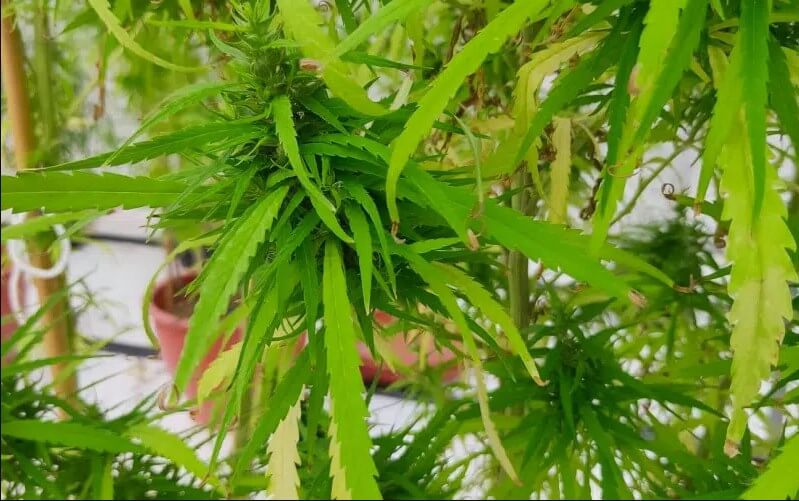
Large, bushy flowers, looks like a squirrel’s tail which is directly translated to ‘Hang Kra Rok’ in Thai. It has a rich aroma similar to mangoes with no pungent smell.
It has equal parts CBD and THC.
Hang Suea Sakon Nakhon TT1
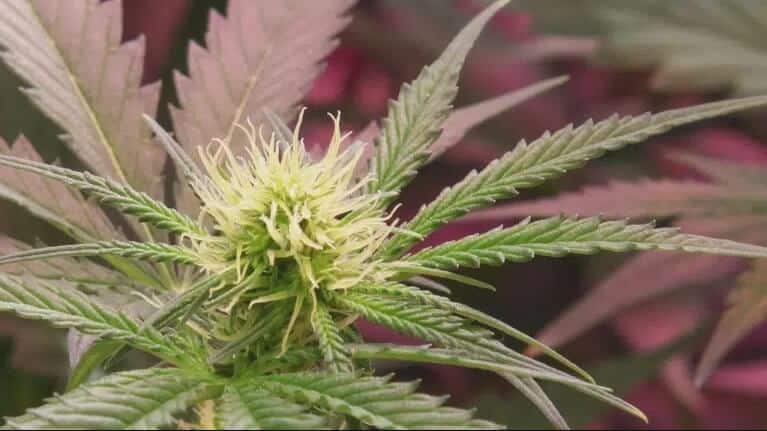
This strain has long flowers like a rudder and smells like orange peel with a slightly pungent scent.
Hang Suea Sakon Nakhon TT1 has more THC than CBD.
Tanaosri Kan Khaw WA1
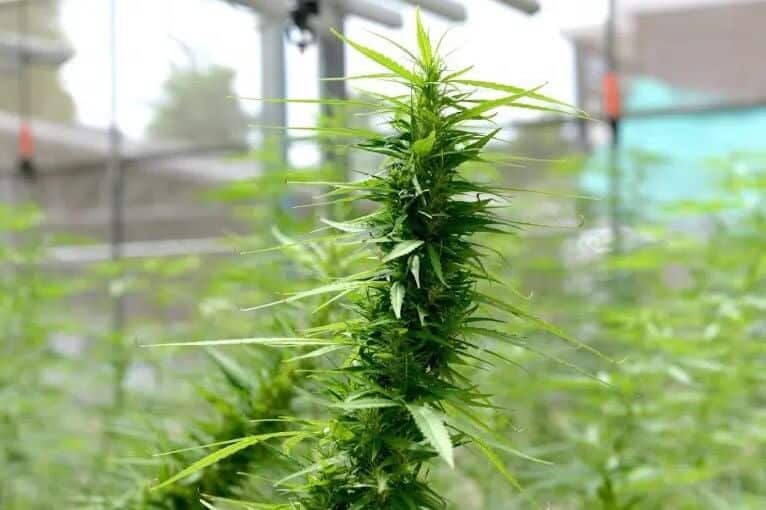
It has the appearance of tightly clustered flowers; smells like orange peel mixed with lemongrass.
Like the TT1 strain, this too has more THC content and a less pungent smell than the TT1 variety.
Tanaosri Kan Daeng RD1
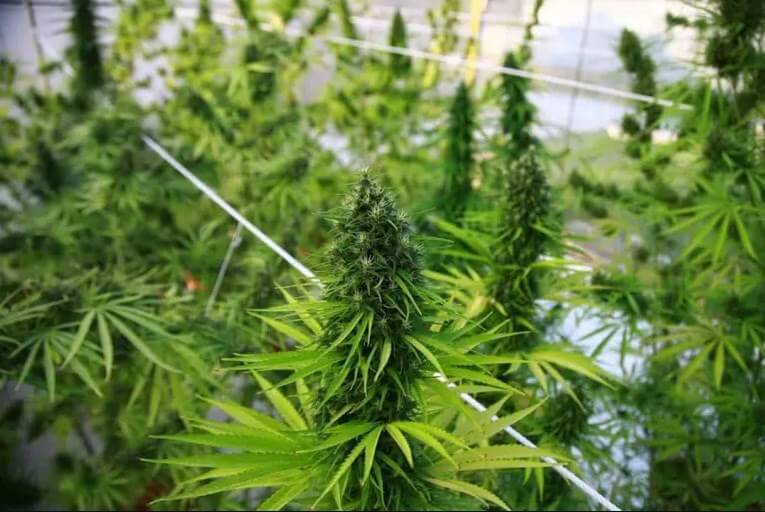
Similar to WA1 but is red on the branches, stems, and petioles. Has a sweet, pleasant aroma without any pungent scent. It has more cannabidiol content than THC, making it the least psychoactive type among the four marijuana strains.
Compared with the marijuana database globally, these strains were found to be grown only in Thailand.
Attachments
Last edited:

